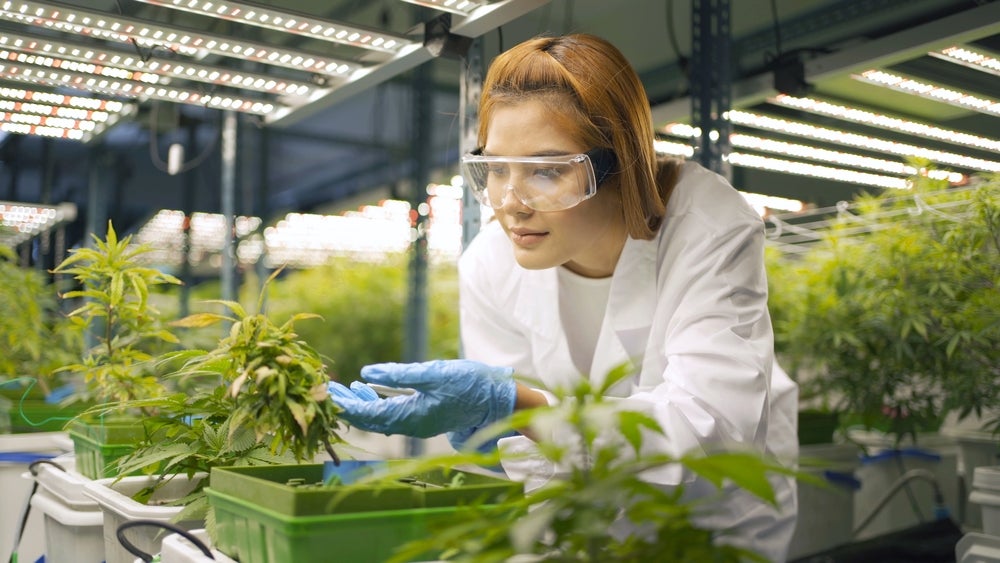Getting your cannabis clones off to a strong start in the vegetative stage is crucial for ensuring healthy plants and maximum yields later on. Proper topping, pruning and training techniques allow you to control the plant’s growth, direct energy towards developing colas, and maximize the amount of bud sites. Paying close attention and caring for your clones in veg will pay off enormously down the road. Here’s a guide to the key techniques for caring for clones in vegetation.
Topping
Topping is one of the most effective techniques for shaping cannabis plants during the vegetative stage. It involves cutting or “topping” off the main apical stem to split the plant into two main tops. With the apical dominance interrupted, the plant is forced to develop multiple cola sites rather than just one main cola.
Timing is important when topping. Most growers top their plants once they reach their 5th or 6th node. The node is where new growth emerges from the stem. Allowing 5-6 nodes to develop provides enough maturity for the plant to recover from the topping. It’s best to top above the 3rd or 4th node. Cut 1⁄4 inch above the node with sterilized scissors or pruning shears.
Topping redirects hormones and energy to the two new cola sites you have created. As they develop, you’ll achieve a bushier plant with better branching and more even canopy. Topping can be done multiple times in veg to further multiply cola sites. Just allow 1-2 weeks between toppings for recovery. The end result is a shorter, bushier plant with multiple large colas instead of one main cola. This opens up the plant to receive better light exposure.
Pruning
Judicious pruning is important in veg to remove problematic growth and direct energy. START by pruning away any dead or dying leaves and branches which can divert energy away from healthy growth. Next, prune back the lower 1/3 of growth on the plant. The understory will receive very little light, so removing this growth pushes energy towards the top.
Selective pruning can also open up the inner canopy to allow better air flow and light penetration. Take off a few fan leaves shading developing nodes and cola sites. Be careful not to overdo it, as the fan leaves produce energy via photosynthesis. Avoid removing more than 20% of leaves at a time.
Regular pruning keeps plants tidy, directs growth upwards, and allows proper airflow to avoid problems like powdery mildew. Always use sterilized pruning shears and trim just above nodes. Disinfect tools between plants to prevent spreading disease. Proper technique and timing are key for harnessing the benefits of pruning.
Training
Training techniques like low-stress training (LST) and screen of green (SCROG) involve gently manipulating branches to grow horizontally and fill the canopy. This opens plants up, catches better light exposure, and again results in multiple large colas rather than one apical cola.
LST uses soft plant ties to gently bend and spread branches at a 90 degree angle. Secure ties to the rims of pots and gently pull branches downwards and outwards. Be gradual and don’t forcebranches past their natural range of motion. Even gentle training redirects hormones so branches grow outward instead of up.
As plants grow through the ties, continue training new branches. The end result is a flattened, even canopy with dozens of bud sites receiving direct light. A SCROG takes LST one step further by using a trellis net to spread and support branches. Plants grow up through square holes, allowing you to weave and train plants for a perfectly even canopy of colas.
Start LST/SCROG training right when branching takes off in veg. Be patient and consistent, repeating every few days as needed over the entire vegetative period. This gradual process keeps stress minimal. The payoff is highly increased yields, bigger buds, and easier harvesting compared to untrained plants.
Caring for Clones in Veg
Giving your cannabis clones the proper care in vegetation is crucial. Here are some key tips for setting your plants up for success:
- Use smaller containers like 1-2 gallon pots in veg to restrain growth. This prevents plants from getting too large before the flowering stage.
- Ensure proper air flow and ventilation. Climate control is vital in veg to prevent problems like powdery mildew.
- Keep humidity around 65% in vegetation to support healthy growth.
- Let the surface of the soil dry out between waterings. Lift pots to gauge weight and water again once light.
- Feed plants a nitrogen-rich vegetative nutrient solution. Nitrogen drives leafy green growth in veg.
- Maintain proper lighting with 18-24 hours per day in vegetation. LED grow lights provide an affordable, low heat option.
- Monitor for pests and promptly treat any infestations. Be vigilant to keep clones pest-free before flowering.
- Train plants frequently and consistently throughout veg growth. Never let branches get too long between training sessions.
Following these tips provides cannabis clones with an optimal environment in the vegetative stage. Addressing issues like pests, humidity, and proper watering sets up your garden for success. Topping, pruning and training techniques keep plants growing vigorously while shaping desirable traits. Paying close attention and applying the techniques outlined here will allow you to maximize the output and quality of your cannabis buds later on. Proper veg care transforms clones into thriving plants ready to explode with growth in the flowering stage.
To explore the latest trends in Cannabis Industry, our articles on Legalizing of Four Cannabis Plants per Household in Canada, How Much Cannabis Can I legally Carry In The Canada, and New York Governor Announces Start Of Recreational Weed Sales offer valuable insights.













